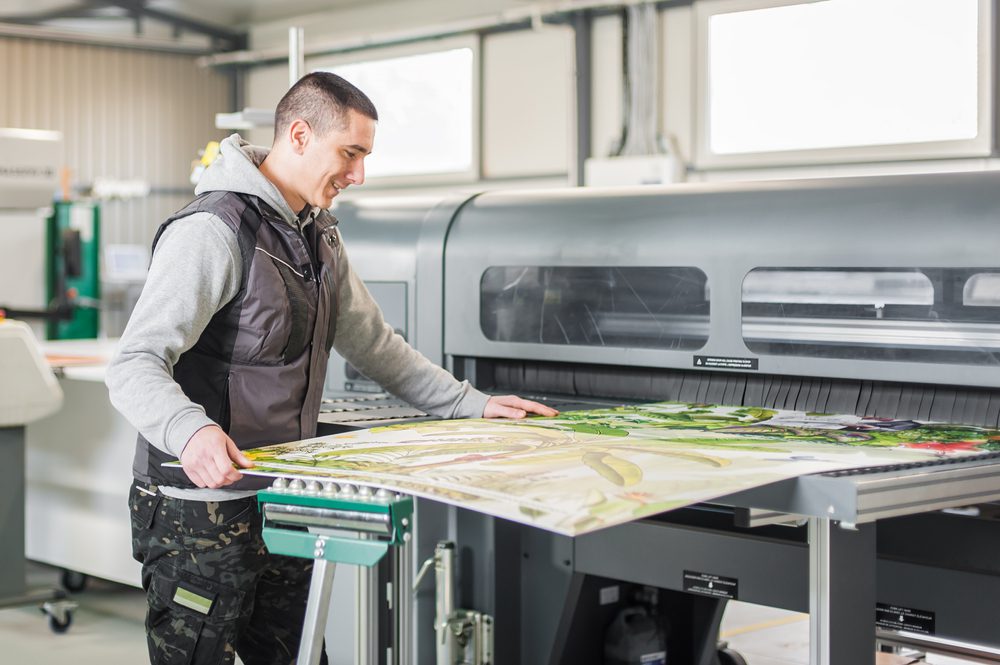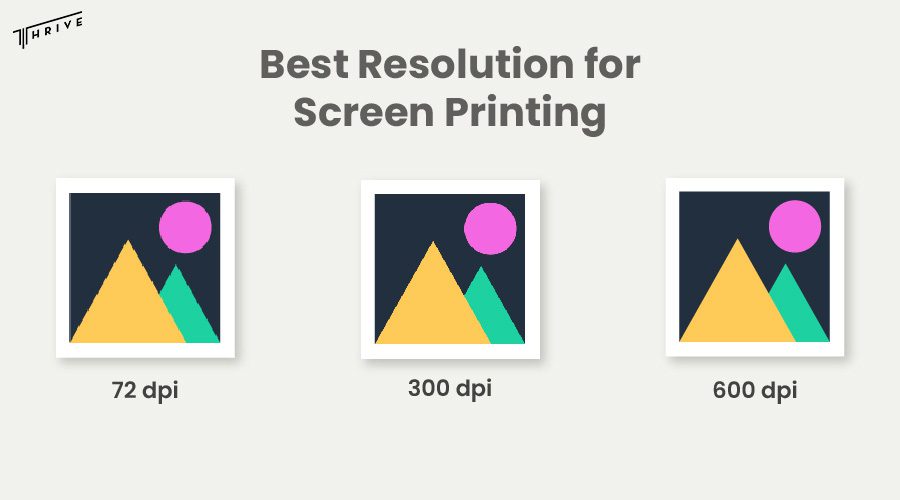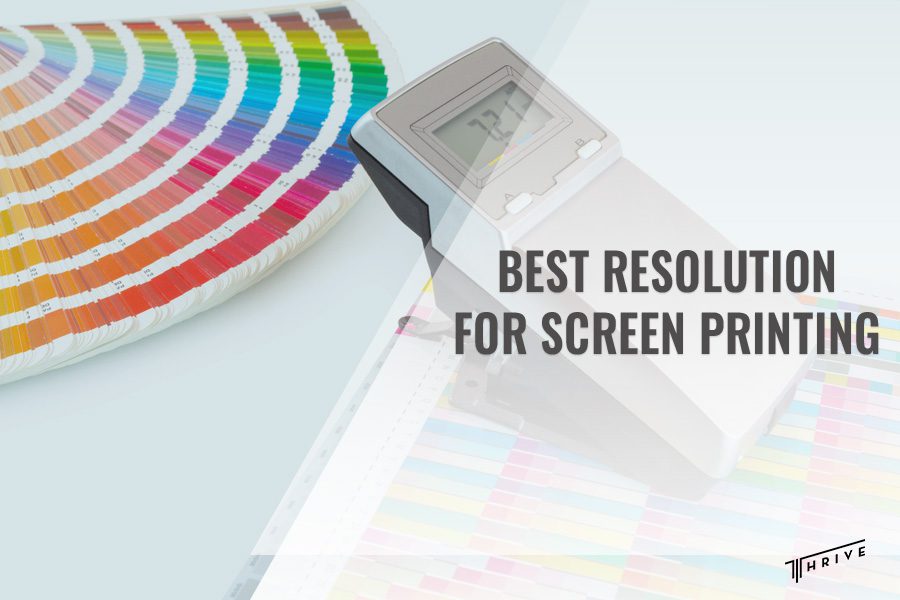Screen printing is the method of transferring images and artwork from source material to print material. But to achieve high-quality results in the print process, printers must use a suitable image resolution. So, what is the best resolution for screen printing?
The resolution is especially crucial for print quality in screen printing garments. Below, we will explore how the resolution affects the final quality and why. If you are interested in commercial printing, read on to learn more!
Best Resolution for Screen Printing
Screen printing designs require resolutions ranging between 300-600 DPI (drops per inch). The standard resolution for screen printing is 300 DPI, and the best is 600 DPI. Of course, it might depend on factors like the complexity of the design.
So, what is the acceptable resolution for screen and print? 300 DPI is more suitable for simpler designs, but for screen printing high-quality and long-lasting prints, you need a higher resolution like 600 DPI.
A great contract screen printer understands the difference the image resolution makes in screen printing, which sets Thrive Screen Printing apart from the competition.
We understand the role of image resolution in screen printing, allowing us to provide our clients with the most vibrant and high-quality prints. If you are unsure which resolution is suitable for the design you intend to print, contact us, and we’ll be sure to help you.

Why is 600 DPI good for printing?
When it comes to ensuring high-quality graphics that capture even the most minor details, you need high image resolution. This is why 600 DPI is good for printing, especially for contract screen printing.
With print resolutions of 600 DPI, we can capture even details such as small font sizes and the smallest scannable barcodes. Such minor details are highly valuable, and a lower resolution may not be able to provide the needed readability.
The more details and fine lines designs have, the higher resolution they will require to capture them during the printing process. This print resolution is considered good because it produces images that are:
- Sharp
- Crisp
- Clear
- Detailed
This means that while 300 DPI is the standard for good-quality printing, 600 DPI is even better. 600 DPI print resolution allows you to capture a sharp and defined image of the original artwork.
Image Quality: Screen vs. Print Resolution
When discussing image resolution, we refer to the amount of details the image holds. The higher the resolution of an image, the crisper its details are.
However, if the image used to print is of a lower resolution, the fine differences in color may disappear, the edges may become blurred, etc. So, the two types of resolution important in image printing are screen and print.
Screen resolution
Screen resolution refers to the quality of a digital image on a screen. The measurement for screen resolution is PPI (pixels per inch).
The monitor uses tiny pixels to arrange text and graphics on a screen. The on-screen image’s suitable resolution is 72 DPI.
Increasing the DPI for an image on the screen won’t affect the quality; it will only make the file larger. If you change the number, for example, from 72 DPI to 300 DPI, your monitor will only calculate and add pixels to fill the gaps.
Print resolution
On the other hand, when we talk about the quality of printed materials, we refer to print resolution. Print resolution is expressed as dots per inch, or “DPI,” which is the quantity of ink dots a printer places on a sheet of paper per inch. So, a printer set to 300 DPI will produce 300 ink dots for each inch of the print, while 600 DPI produces 600 ink dots.
The higher the resolution of the artwork, the higher the quality of the printed material will be. The print resolution is not affected by the screen size. Hence, the print resolution will remain the same as in the original image, no matter how large or small the print material is.
What is DPI?
The resolution of an image is measured in DPI or dots per inch. The term DPI in screen printing describes how many ink dots may be printed in a square inch. The printed image might have greater sharpness and detail the higher the DPI.
Greater screen printing quality can be achieved with a higher DPI, enabling the printing of finer details and more fluid lines. A higher DPI can be utilized to obtain more clarity and detail if the base material has a smooth surface.
Screen printing quality can also be influenced by variables other than DPI. This includes the original picture file’s quality, the color separation procedure, and the caliber of the screen and ink.
Printing Techniques and Resolution
For all printing techniques, the standard printing resolution is 300 DPI, especially for simple designs and bulk orders. But for more complex designs that include small fonts, labels, and detailed graphics, printers use 600 DPI.
This ensures the print is true to the original image and captures even minor details. These resolutions are suitable for printing techniques like screen, direct-to-garment (DTG), and heat transfer printing.
As the printed material’s quality depends on the image resolution, it is best to use higher resolution in the print process. With 600 DPI, you may achieve a much higher level of quality.
This is why we use this range of 300-600 DPI resolution for professional printing purposes. For screen printing simple logos or images without many details, 300 DPI is suitable for achieving high-quality prints. However, if the image contains complex graphic artwork design and fine lines, it is best to use 600 DPI for clearer and crisper print results.

Conclusion
Regarding the best resolution for screen printing, to achieve the highest quality is 600 DPI. Still, as we mentioned, it is vital to consider the image itself.
For instance, for simple designs, most printers choose 300 DPI as it achieves high-quality prints because there aren’t that many details. But higher resolution is better if the image artwork is complex with many small details.

Robert Fisher is the founder and CEO of Thrive Screen Printing and brings extensive experience in the screen printing and fulfillment industry.


